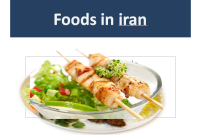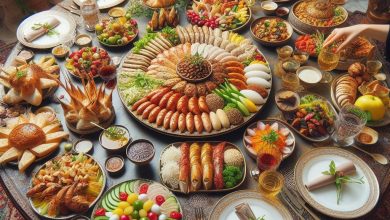What foods are unique in Iran? Is Iranian food vegetarian? What foods are unique in Iran?
foods are unique in Iran
What foods are unique in Iran?
As a result of its history, culture, and location, Iran has a rich and varied culinary tradition. Here are a few classic and distinctive Iranian dishes:
- Chelow Kebab: a common dish served with grilled tomatoes in Iran that normally consists of boiled rice (chelow) and grilled meat (kebab).
- Tahchin: a rice dish with layers of marinated beef or chicken, yogurt, and saffron that, when cooked, develops a crispy golden coating.
- Ghormeh Sabzi: a well-liked stew cooked with kidney beans, lamb or beef, dried limes, and a variety of fresh herbs. It frequently comes with rice.
- Fesenjan: a hearty and savory stew cooked with pomegranate paste, ground walnuts, and typically chicken or duck. It tastes tart and sweet.
- Dolma (Dolmeh): filled grape leaves made of rice, ground beef, and a variety of herbs and spices.
- Kashk-e Bademjan: fried eggplant, kashk (a type of dairy product), garlic, and different seasonings are combined to create a creamy eggplant dip.
- Ash-e Reshteh: a filling and thick noodle soup that is frequently topped with kashk and fried mint. It is cooked with a variety of herbs, lentils, chickpeas, and occasionally meat.
- Mirza Ghasemi: a dish made with smoked eggplant, tomatoes, garlic, and occasionally eggs. Usually, it’s offered as an appetizer.
- Halim: a filling and filling porridge made with wheat, meat (usually lamb or chicken), and lentils.
- Sabzi Polo Mahi: sabzi polo, a traditional Persian meal for the New Year, is served with fish (typically white fish) to represent prosperity.
- Kookoo Sabzi: a style of herb-based frittata prepared with eggs, fresh herbs, and occasionally walnuts.
- Zereshk Polo: Rice is combined with barberries, saffron, and occasionally fowl to make a dish that is both sweet and savory.
- Saffron Ice Cream (Bastani Sonnati): a well-liked ice cream with saffron, rosewater, and pistachios as flavorings.
- Yakh Dar Behesht: Rosewater, saffron, and frozen heavy cream are used to make a classic Iranian ice cream.
- Aash-e Shole Ghalamkar: A typical Iranian garnish of yogurt and fried mint is added to this lentil, chickpea, and vegetable soup.
These are only a few of the numerous inventive and mouthwatering cuisines that Iran has to offer. Iranian food is renowned for its use of flavorful spices, fruits, and nuts, as well as for its skillful balancing of sweet and savory tastes.
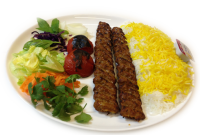
Is Iranian food vegetarian?
Although Iranian food is not entirely vegetarian, there are several vegetarian and plant-based cuisines available. Vegetarians and vegans can eat traditional Iranian food because it uses a variety of fruits, vegetables, grains, legumes, and herbs.
Numerous well-known Iranian meals are vegetarian or may simply be made vegetarian by removing or replacing the meat. For instance, various varieties of Kookoo (herb-based frittatas), Ash-e Reshteh (a noodle and herb soup), Kashk-e Bademjan (eggplant dip), Zereshk Polo (rice with barberries), and many other foods are historically vegetarian.
When ordering food in Iran or creating Iranian meals at home, it’s crucial to specify dietary preferences and limits to make sure they adhere to a vegetarian or vegan diet. Furthermore, certain traditional dishes could include items like yogurt (kashk) or eggs, so it’s important to double-check the ingredients and ask for adjustments if necessary.
What foods are unique in Iran?
Iranian food is renowned for its distinctive flavors, fragrant spices, and wide variety of cuisines. Here are a few dishes that are distinctively Iranian:
- Saffron: Iran is the world’s largest saffron producer, and it is a key component in many Iranian recipes, contributing to their distinctive color and flavor.
- Barberry (Zereshk): Barberries are tiny, sour red berries that are used in a variety of Iranian recipes, especially rice dishes like Zereshk Polo.
- Pomegranate: Iranian food frequently includes pomegranates, which are used in sauces, marinades, and as garnishes.
- Dried Limes (Limoo Amani): Iranian cuisine frequently uses dried limes to give stews, soups, and rice dishes a tangy, lemony flavor.
- Sumac: Sumac is a spice that is created from ground berries that gives food a tart, somewhat lemony flavor and a bright red color.
- Rosewater and Rose Petals: Rosewater is a widely used ingredient that adds a distinctive floral flavor and scent to both sweet and savory meals.
- Pistachios: Pistachios are widely used in desserts, rice dishes, and as a snack and are an important crop in Iran.
- Nuts and Dried Fruits: Almonds, walnuts, and raisins are just a few examples of the many nuts and dried fruits that can be used to enhance the flavor and texture of food.
- Turmeric: Iranian cooking frequently uses turmeric, which gives food a distinct earthy flavor and a bright yellow color.
- Tahini and Sesame Seeds: Sesame seeds and tahini, a paste produced from ground sesame seeds, are frequently used in desserts, salads, and dips.
- Halva: a sweet treat made with sesame paste or flour, sugar, honey, and frequently saffron, rosewater, or cardamom.
- Qottab: a common sweet pastry made in Iran that is packed with sugar, ground walnuts, and cardamom- and cinnamon-flavored almonds and sugar.
- Gaz: pistachios, almonds, and rosewater are used to make this classic Persian nougat.
- Faloodeh: treat that resembles sorbet and is created with vermicelli noodles, rosewater, and frozen syrup.
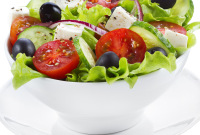
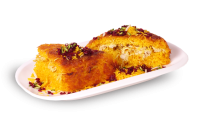
Iranian cuisine is distinctive and pleasing to a wide range of palates because to the inventive use of these specific ingredients and flavors in a variety of Iranian meals.
